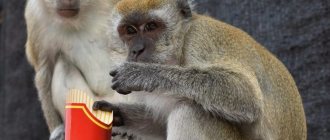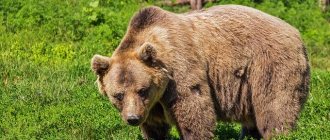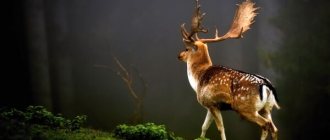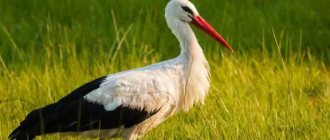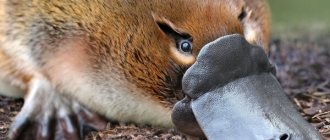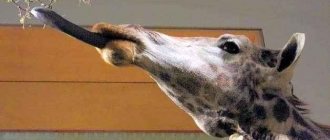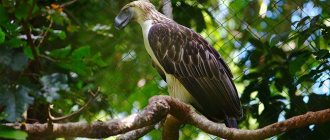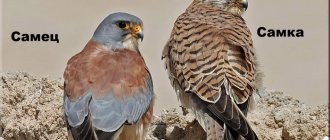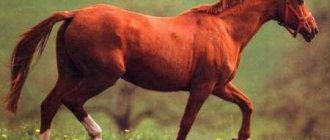This horned mammal is one of the most endangered animals on Earth.
The rhinoceros is an animal that was once found from Southeast Asia through Africa. Today, three species of rhinoceros are listed as “Endangered” and cling to small pockets of habitat.
With its distinctive horn and massive size, the rhinoceros is one of the most unique animals on Earth. However, intensive poaching for its horn now threatens several rhino species.
Types of Rhinos – 5 Types of Rhinos
There are five distinct species of rhinoceros, which vary greatly in size and anatomy. Today, the rhinoceros is an animal that lives throughout Africa and Asia.
White rhinoceros
The largest species of rhinoceros, the white rhinoceros, is an animal that is native to Africa. While the southern white rhino has bounced back from the brink of extinction today, the northern white rhino is now functionally extinct following the death of the last male in 2022.
Black rhinoceros
Known for its triangular upper lip, the black rhinoceros is an animal that once roamed much of sub-Saharan Africa. However, today it is endangered.
Indian rhinoceros
Asia's largest rhinoceros, the Indian rhinoceros, has a range extending across the foothills of the Indian subcontinent. The Indian rhinoceros has a distinct appearance with a single horn and skin that has a “body armor” appearance.
Sumatran rhinoceros
The Sumatran rhinoceros was once found from India to the island of Borneo, but today it is critically endangered and found in just a few isolated pockets deep in the jungle.
Although the Sumatran rhinoceros can still weigh up to 1,000 kilograms (2,200 pounds), it is the smallest rhinoceros species in the world. Sumatran rhinoceroses are known for their prehistoric appearance, with hair that can cover their entire body.
Javan rhinoceros
The Javan rhinoceros, which once roamed Southeast Asia, today lives in only one nature reserve in Indonesia - Ujung Kulan National Park.
Equine family
Burchell's zebra
Burchell's zebra is the most common type of zebra. This animal acquired its name thanks to the British botanist William Burchell.
The natural habitat of this zebra is considered to be Southeast Africa. This is a non-capricious zebra, which, unlike its relatives, feels great both in mountainous areas and in lowlands with tall grass.
Burchell's zebras are herd animals that live in family herds. The number of one herd is at least 10 individuals. The exception is young males, aged 1 to 3 years, who are expelled from the herd.
The main diet of this zebra is cereals. Burchell's zebras are worse when it comes to leaves and shoots of bushes.
Mountain zebra
The Mountain zebra differs from the Burchell's zebra in that it has wider black stripes on its body and thinner white spaces between them.
The weight of this zebra varies from 260 to 370 kg. The animal reaches a height of 1.2-1.5 meters.
Mountain zebras prefer to live in small groups consisting of an adult male and several females (about 5 individuals) along with their cubs. Usually males react very aggressively to males of other groups. 1 leader leads his group for about 10-15 years, until he is replaced by a younger and stronger male. Females usually live in their group all their lives, but if the group grows greatly, they can separate from it.
In addition, there are 2 more groups:
- Young males who have not yet found their herd.
- Old males who were driven out by young males.
The habitat of representatives of this species is much smaller than that of the Burchell's zebra described above. Mountain zebras, as you might guess, are found in mountainous areas at an altitude of up to 2 km.
Grevy's zebra
Representatives of this species prefer desert plains. These animals graze all day long. They feed mainly on grass, tree leaves, bark and shrubs. If there are watering holes in their habitat, they visit them daily. In 1 day, one zebra can drink up to 20 liters of water. However, unlike Burchell's zebras, Grevy's zebras can go without water for a long time.
Unlike the species described above, Grevys prefer to stay in separate herds. Females and their offspring live in the same groups, and males live separately.
From a distance it may seem that zebras are grazing in one large herd, but if you look closely, it becomes clear that these are small groups, with a certain distance between them.
African donkey
The African donkey is one of the rarest equids. Despite being the ancestor of all domestic donkeys, it is still little known to many people. The closest relatives of this odd-toed ungulate are zebras and wild ass.
A representative of this species is characterized by the presence of long ears, an erect mane and a large head. At first glance, the wild African donkey is no different from the domestic one we are used to, but this is not at all the case. The wild African donkey has striped legs, which clearly indicates their relationship with zebras. Domestic donkeys simply do not have such stripes.
Males and females have no external differences.
Kulan
In their color, kulans are more similar to Przewalski's horse. The mane is dark in color and stretches along the entire spine. In summer the coat becomes shorter and stiffer, in winter it becomes softer and longer.
The total length of the body of the kulan reaches 2 m, and the height is up to 1.25 m. Adult individuals have a body weight of about 120-300 kg. If we compare Kulan with his relatives, he is larger than a donkey, but smaller than a horse.
Przewalski's horse
The Przewalski's horse is a herd animal. The herd consists of a leader (main stallion), 5-6 adult females and several children. There are also bachelor groups, which consist mainly of young stallions. Old stallions, who are no longer able to manage the herd, lead a solitary lifestyle or “join” herds of young stallions.
The Przewalski's horse spends most of the day searching for food. The group is usually led to the pasture by an experienced female, and a harem stallion brings up the rear.
During rest, females usually sleep standing while the stallion scans the surroundings for danger.
domestic horse
A domestic horse is an animal from the equine family. This animal is domesticated by humans and is the only subspecies of wild horse that could not survive in the wild (with the exception of Przewalski's horse).
Domestic horses live on average about 30 years. However, there are cases where horses lived to be 40 or even 62 years old (Old Billy horse).
The average height of an adult horse reaches 150-175 cm; if we talk about ponies, they are from 120 to 150 cm in height.
Appearance of a rhinoceros
Rhinoceroses are the second largest land animal, second only to the elephant. These species first evolved during the Eocene - an era that ended about 33.9 million years ago - and are among the last remaining "megafauna". That is, animals that, by today's standards, are simply huge.
They have a strong cylindrical body with a large head, relatively short legs and a short tail. A characteristic feature of these animals is a large horn in the middle of the muzzle; some species have a second, smaller horn.
Rhinoceroses have brilliant hearing and the rhinoceros also has a keen sense of smell, but the rhinoceros is well known for its extremely poor eyesight. They are usually grey, black or brown (although one species is called the “white rhinoceros”).
Meaning for humans
Humans have a historically long history of interactions with equids. The wild donkey was the first animal to be domesticated. This happened around 5000 BC. in Egypt. Horses were domesticated 1000 years later, in the late Neolithic. The original purpose of domesticating horses may have been for food, but around 4,000 years ago they became a means of human transportation and were used in war. Nowadays, horses also participate in sporting events. Although rhinoceroses have not been domesticated, they have been kept in zoos and menageries since ancient times. Zebroid, i.e. a zebra hybrid, began appearing in zoos and menageries during the nineteenth century.
In addition, wild equid species are important because tapir food and skins are widely used by humans. Rhinos are illegally hunted for their horns and other body parts, which are used in traditional Asian medicine.
Rhino weight
Species of rhinoceros vary greatly in length and weight, but on average weigh about 1.5 tons (1,360 kg) as adults. The largest species, the white rhinoceros, can weigh up to 3,600 kg (7,920 lbs), which is on average almost four times the weight of the smaller Sumatran rhinoceros!
· White Rhinoceros: 1,440 – 3,600 kg (3,168 – 7,920 lb)
· Black Rhino: 800-1400 kg (1800-3100 lb)
· Indian rhinoceros: 2200-3000 kg (4900-6600 lb)
· Javan Rhinoceros: 900 – 2300 kg (2000-5100 lbs)
· Sumatran rhinoceros: 500-800 kg (1100-1760 lb)
Rhino horn
The most notable features of rhinoceroses are the large horns that grow from their heads.
Rhino horns are made from keratin, the same type of protein that makes up the hair and nails of most animals, including humans. Both the African rhinoceros and the Sumatran rhinoceros have two horns, while the Indian rhinoceros and the Javan rhinoceros have only one horn.
Female Javan rhinoceroses are notable in that they often lack a horn or have a smaller “bump” on their nose.
Unfortunately, rhinos face incredible pressure from poaching, as their horn is coveted both for traditional Chinese medicine and as a status symbol.
Rhinoceros: description and photo. What does the animal look like?
The rhinoceros is the largest land animal after the elephant. Modern rhinoceroses reach a length of 2–5 meters, a shoulder height of 1–3 m and weigh from 1 to 3.6 tons. The color of their skin, as it seems at first glance, is reflected in the names of the species: white, black, and everything is clear here. But it was not there. In fact, the natural skin color of white and black rhinoceroses is approximately the same - it is gray-brown. And they are named so because they like to wallow in soils of different colors, which paint the surface of the rhinoceros’s body in different shades.
By the way, the name “white” was generally assigned to the white rhinoceros by mistake. Someone mistook the Boer word "wijde", which means "wide", for the English word "white". Africans named the animal this way because of its massive square muzzle.
Indian rhinoceros. Photo credit: Sepht, CC BY 2.5
Rhinoceroses have a long, narrow head with a steeply sloping forehead. A concavity resembling a saddle forms between the forehead and nasal bones. The animals' disproportionately small eyes have oval brown or black pupils, and short, fluffy eyelashes grow on the upper eyelid.
Rhinos have a well-developed sense of smell: it is on this that animals rely more than on other senses. The volume of their nasal cavity exceeds the volume of the brain. Rhinos also have well-developed hearing: their tube-like ears constantly rotate, picking up even faint sounds. But giants have poor eyesight. Rhinos only see moving objects from a distance of no more than 30 meters. The location of the eyes on the sides of the head prevents them from seeing objects well: they first see an object with one eye, and then with the other.
Photo credit: Chi King, CC BY 2.0
The upper lip of Indian and black rhinoceroses is very mobile. It hangs down a little and covers the lower lip. Other species have straight, awkward lips.
The jaws of these animals are always missing some teeth. In Asian species, incisors are present in the dental system throughout life; African rhinoceroses do not have incisors in both jaws. Rhinos have no fangs, but each jaw grows 7 molars, which wear out greatly with age. The lower jaw of Indian and black rhinoceroses is also decorated with pointed and elongated incisors.
Photo credit: Jebulon, CC0
The main distinguishing feature of rhinoceroses is the presence of horns growing from the nasal or frontal bone. More often these are one or two unpaired outgrowths that are dark gray or black in color. Rhinoceros horns are not made of bone tissue, like those of bulls, rams or antelopes, but of keratin protein. Porcupine quills, human hair and nails, bird feathers, and armadillo shells are made of this substance. In composition, the outgrowths of rhinoceroses are closer to the horny part of their hooves. They develop from the epidermis of the skin. In young animals, when wounded, the horn is restored, but in adult mammals it no longer grows back. The functions of horns have not yet been sufficiently studied, but scientists have found that females whose horns are removed cease to be interested in their offspring. It is believed that their main purpose is to push trees and grasses apart in thickets. This version is supported by changes in the appearance of the horns in adult individuals. They become polished, and their front surface is somewhat flattened.
The Javan and Indian rhinos grow 1 horn with a length of 20 to 60 cm. The white and Sumatran rhinos have 2 horns each, and the black rhinoceros has 2 to 5 horns.
Indian rhinoceros horn (left) and white rhinoceros horns (right). Left photo credit: Ltshears, CC BY-SA 3.0; photo on right: Revital Salomon, CC BY-SA 3.0
The white rhinoceros has the longest horn; it grows up to 158 cm in length.
Photo credit: US Fish and Wildlife Service Headquarters, Public Domain
Rhinoceroses are heavy, thick-skinned mammals with three-toed, short, massive limbs. At the end of each finger they have a small, wide claw.
The animal's footprints are easy to recognize: they look like a clover leaf, since the rhinoceros rests on the surface of the soil with all its toes.
Photo credit: Ted, CC BY-SA 2.0
Photo credit: Salix, CC BY-SA 3.0
There is practically no fur on the coverings of giants. Only the tips of the ears are covered with small bristles, and the thin tail, 60-76 cm long, ends in a brush of coarse hair. Due to the fact that the skin of rhinoceroses is not protected by anything, they cover it with mud, in this way protecting themselves from annoying parasites.
Photo credit: Salix, CC BY-SA 3.0
The most “woolly” modern rhinoceros is the Sumatran, it is covered with bristly brown hairs, the densest in young individuals.
Photo credit: Ltshears, CC BY-SA 3.0
The skin of the Indian rhinoceros is gathered into voluminous folds, which makes this animal look like a knight in armor. Even its tail hides in a special recess in the shell.
Photo credit: SuperJew, CC BY-SA 3.0
The longest rhino horns
In 2006, Dr. Nico van Strien conducted a study of the longest rhinoceros horns by species.
- White Rhino: 59 inches (150 cm)
- Black Rhino: 51 inches (130 cm)
- Sumatran rhinoceros: 32 inches (81 cm)
- Indian Rhinoceros: 23 inches (57 cm)
- Javan rhinoceros: 11 inches (27 cm)
Rhino horns can grow in various forms. For example, a white rhinoceros kept in captivity in Sequim had a horn that grew to more than four feet in size, growing parallel to the ground. The horn grew so large that it had to be cut off twice with a chainsaw!
Rhino behavior
Rhinoceroses usually lead a solitary lifestyle. Black rhinos will defend their territory more aggressively, while Indian and Javan rhinos have a looser territory that can overlap. Sumatran rhinoceroses, which live in denser forests and vegetation, carefully mark trails with feces and urine.
Groups of rhinoceroses
While most rhino species are solitary, the white rhino is the most social of all species. Groups of a dozen or more white rhinos often form. This behavior is especially common among females with cubs, as it may help mothers protect their offspring at a time when they face greater threats from predators.
Description
Odd-toed ungulates are characterized by their single functional hooves or three connected functioning digits that bear the animal's weight, with the axis passing through the middle toe. Members of the family Equidae (horses, zebras, etc.) have one functional toe. Representatives of Rhinocerotidae (rhinoceros) have three toes on all four limbs. Members of the Tapiridae (tapirs) have three toes on their hind limbs and four on their front limbs.
Rhino habitat
The rhinoceros usually lives in dense forests and savannas, where there is plenty of food and plenty of hiding places in which it can hide. The rhino's range once spanned much of Africa and Southeast Asia, but today its range has shrunk significantly.
In Africa, the historical habitat of the rhinoceros was grasslands and savannas, extending across much of sub-Saharan Africa. Today, although black rhinoceroses can still be found from Ethiopia to South Africa, their populations are limited to small pockets in nature reserves and other protected areas.
The Sumatran and Javan rhinoceros live in denser forests and their range once extended throughout Southeast Asia, however today the Javan rhinoceros can only be found in one nature reserve, while the Sumatran rhinoceros has a few remaining pockets of surviving populations.
Like other rhino species, the Indian rhinoceros has seen its range sharply shrink. It lives in high grasslands and forests at the foot of the Himalayan range.
Rhino population - how many White Rhinos are left?
Three species of rhinoceros – the black, Sumatran and Javan – are listed as “Endangered,” while the Indian rhinoceros is listed as “Vulnerable” and the white rhinoceros is “endangered.”
According to the International Rhino Foundation, the following populations of each species exist in 2022:
- White rhinoceros: 18,000
- Black Rhino: 5500
- Indian rhinoceros: 3600
- Sumatran Rhinoceros: 80
- Javan Rhinoceros: 72
Four out of five rhino species increased their populations between 2009 and 2022.
The only exception is the Sumatran rhinoceros, which lives in isolated pockets and continues to suffer from poaching. Between 2009 and 2022, its population fell from about 250 individuals to less than 80.
Lifestyle
Rhinoceroses prefer a solitary lifestyle, avoiding noisy communities. Even females expel their strong young as soon as a new litter appears. Sometimes this can cause the death of a young herbivore, especially if he is looking for company in the territory of an adult male. Only female white rhinoceroses can create small groups, leaving with them offspring that have not reached maturity. In other cases, animals seek meetings only during the mating period.
It is curious that the thick-skinned giants compensate for their lack of vision with the constant company of voloklyu birds, which eat various parasitic insects from their huge skins. At the moment of danger, the birds noisily leave the titan's back, warning him of the danger. For this they received the nickname “defenders of rhinoceroses.”
Rhinoceroses, capable of digesting any plant food (including shoots of poisonous grasses and shrubs), do not take part in migrations at all. On the contrary, they become attached to a certain territory for many years. They mark the boundaries of their property with excrement. Thus, heaps of dung serve as boundary pillars, allowing the blind giant to navigate in space, and protecting him from unwanted intrusions from outsiders. Having encountered such an obstacle, it makes sense to look around carefully, because the owner of the territory is not distinguished by hospitality.
Extinct species of rhinoceroses
Not a single species of modern rhinoceros is extinct. However, numerous subspecies of rhinoceroses have become extinct in recent years. Historically, there were three subspecies of the Javan rhinoceros, but only one remained after the last surviving Vietnamese Javan rhinoceros was killed in 2010.
The Sumatran rhinoceros subspecies in Malaysia was declared extinct in November 2022 after the last male and female died that year. The northern white rhinoceros is now functionally extinct after the last surviving male died in 2022. In 2011, the western black rhinoceros was declared extinct. The subspecies has not been seen since 2001.
The last species of rhinoceros to become extinct was the woolly rhinoceros (Coelodonta), which is believed to have gone extinct around 8,000 BC.
Nutrition
It’s hard to believe, but the giant beast doesn’t need meat at all to feed itself. Their diet consists only of plant foods. Moreover, white rhinoceroses eat grass to a greater extent, because their lips are folded this way - the upper one is long and flat.
That's why they nibble on greens like cows. But in black rhinoceroses, the upper lip is narrowed and pointed, and with its help, the animal easily tears leaves from branches.
African animals tear off small bushes and huge thickets of even thorny grass straight from the roots and chew them without difficulty. And there were cases when rhinoceroses wandered into farmer’s plantations, then a real disaster happened because they ate everything that could be eaten, trampled down the rest, leaving whole ruts behind.
To saturate the body, the animal needs to eat at least seventy kilograms of grass. They have such strong stomachs that even when they ate poisonous milkweed, it did not in any way affect the health of the animal.
Water also plays an important role in the body of a hero. In hot weather, he needs to drink more than one hundred and fifty liters of fluid per day. rhinoceros animal must drink at least fifty liters of water
What predators hunt rhinoceros
In the wild, rhinoceroses rarely encounter predators. While young, they can be attacked by big cats such as lions or jaguars in addition to crocodiles and other larger predators.
In addition to the rhino's impressive horn and considerable size, the species also has thick skin that serves as a form of natural body armor.
Poachers remain the main threat to rhinos. In South Africa alone, 769 rhinos were poached in 2022. Rhino poaching varies by species, and as of 2022, Javan rhinos have not been poached in more than 25 years.
Enemies in nature
The main enemy of rhinoceroses is, of course, man, who in the old days mercilessly exterminated these animals, including for the sake of their famous horns, which are believed to have various healing properties. They were exterminated to such an extent that now all 5 species of rhinoceroses are included in
Red Book, since due to their low numbers they are on the verge of extinction.
In natural conditions, other animals, given the size and cautiously suspicious disposition of rhinoceroses, try to avoid them. But baby rhinos may well be hunted by different predators: lions,
tigers, crocodiles. But they cannot cope with an adult large rhinoceros, which has thick skin and a sharp large horn.
Capable of easily driving away a lion or a tiger, the rhinoceros, however, turns out to be completely defenseless against various small parasites that bother him: lice, ticks, flies. The situation is saved by the rhinoceros's faithful friends - the rogue birds, who peck these parasites from his skin.
Rhino Reproduction and Life Cycles
Rhinos have one of the longest gestation periods of any animal species, at around 450 days. The longest gestation period in captivity was that of the white rhinoceros, which was 548 days (about 18 months).
This long gestation period means that rhinoceroses usually do not give birth again for an additional 3-5 years. This long gestation period and the long period of time between the birth of new calves has made rhino repopulation a particularly challenging problem.
How long do white rhinoceroses live? The oldest white rhinoceros in captivity lived to be 55 years old, while the oldest record of a black rhinoceros was 52 years old, and the oldest Indian rhinoceros lived to be 48 years old. Typically, rhinoceroses live between 35 and 50 years.
Reproduction
Rhinoceroses reach sexual maturity in the 7th year of life. But a male rhinoceros can begin the process of copulation with a female and the process of reproduction only after he has acquired his own territory. Usually this process takes another 2-3 years of life. The mating season for rhinoceroses usually occurs every month and a half; during this period, the male begins an intensive search for a female, which is interesting, when the male is chasing a female rhinoceros, they can even fight. But then the female gives in to the pressure of the male, and mating occurs.
The pregnancy of a female rhinoceros lasts one and a half years, and only one baby is born to her. A newborn rhinoceros weighs 25 kg, but begins to gain weight very quickly. Interestingly, white rhinoceros babies are born with hair. After just a few days, little rhinoceroses are able to follow their mother, and after three months they eat plants. However, during this period, the basis of their diet is mother's milk. For a whole year, a female rhinoceros feeds her children with breast milk. It should also be noted that small rhinos do not have horns, which begin to grow in their 2-3rd year of life.
Incredible Facts about Rhinoceros
- An “armored” animal Rhinoceroses have a unique skin structure and materials that make them completely different from most mammals. Relative to their body size, rhino skin is three times thicker than expected and contains cross-linked collagen fibers. At its thickest, rhinoceros skin can be about 2 inches (5 cm) thick.
- A rhino's horn is made up of hairs that grow tightly together, and for a time the natural "glue" from the glands on the rhino's nose binds these hairs tightly together. You may have heard that rhino horns are made from the same material as your nails because rhino horns contain tubules of keratin, a protein found in hair, skin and nails.
- While rhinos historically roamed much of sub-Saharan Africa and South Asia, today an estimated 85% of living rhinos are found in just one country: South Africa.
- It is estimated that there were more than a million black rhinoceroses throughout Africa in the early 20th century; today the population numbers just 5,500. While this population loss is staggering, the black rhino population continues to recover.
- Why has rhino poaching skyrocketed? Between 1960 and 1995, poachers killed 98% of black rhinos. This surge in poaching can be explained by the fact that Chinese Chairman Mao Zedong promoted the return of traditional Chinese medicine, which used rhinoceros horn as medicine. Today, strict bans have slowed the rhino horn trade in China, while demand in Vietnam has led to a surge in poaching.
- With fewer than 100 individuals, the Sumatran rhinoceros and the Javan rhinoceros are two of the world's most endangered large mammals. While the Javan rhino population has stabilized in recent decades, some estimates suggest that as few as 30 Sumatran rhinos may survive today.
- Thanks to incredible conservation efforts for rhino species, there is hope. The black rhino population has doubled this century. The white rhino population has grown from 50 individuals to almost 20,000 individuals. Additionally, the Indian rhinoceros population has increased from less than 100 individuals to approximately 3,600.
- Today, more than 5 million acres of private game lands are home to 6,500 rhinos, or about a quarter of the entire rhino population.
- While the illegal rhino horn trade has led to significant poaching over the past decade, thieves have targeted rhino horns from unusual locations. In 2011, thieves robbed the Dublin Museum of four rhino horns. He estimates the heist could sell for $650,000 on the black market. Additionally, in 2011, a rhinoceros horn was stolen from a museum in Ipswich, England. Between 2002 and 2011, more than 20 cases of rhino horns being stolen from museums were reported.
- In addition to protecting rhinos in sanctuaries, where rangers and other (often armed) guards can protect the rhinos, there are efforts to conserve rhinos in unique ways, such as painting their horns with red dyes, 3D printing horns to reduce the price of rhino horns, and even introducing rhinos to new environments and private reserves.
